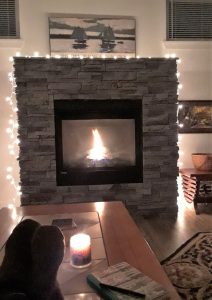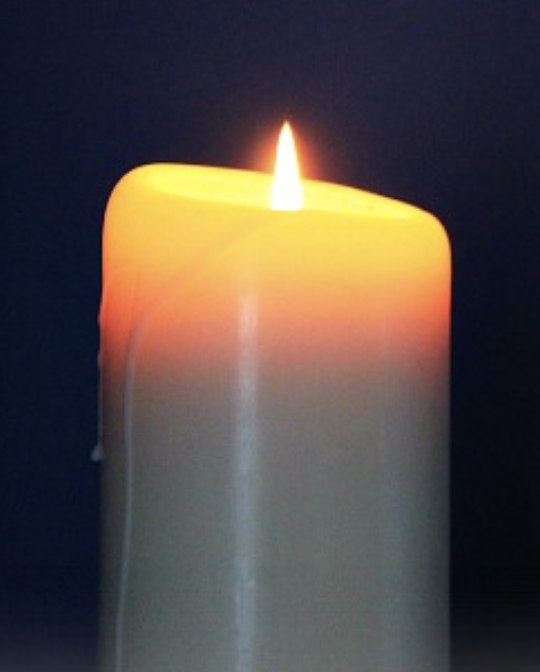Winter is upon us. According to the ancient Celtic calendar, winter begins November 1. It makes sense to me to mark the beginning of winter in November rather than December 21 as the Julian calendar suggests. This Celtic season of winter, called Samhain, means “summer’s end.” In the seventh century Samhain was Christianized as All Saints’ Day, also known as Hallowmas or Hollantide, or later in history as All Hollow’s Eve which has morphed into the present Halloween holiday.
As a Christian who embraces Celtic spirituality, I find it helpful to celebrate the four seasonal festivals on the Celtic Calendar AND the holy days on the Christian calendar. I celebrate the Feast of All Saint’s on the first Sunday following All Saints’ Day (November 1) at my local Episcopal Church. It is important to me to give thanks for all the lives of saints as well as dear family members and friends who are now in the nearer presence of God. Christian communal celebrations strengthen my faith. Yet, I find that observing the four Celtic festivals of the year also enrich my spiritual journey.
Samhain is believed to have marked the beginning of the Celtic New Year. Thus, it is an appropriate time to acknowledge endings in our lives as well as new beginnings. We can align ourselves with the season of harvest not only in an external way but also in a spiritual way. It is a time to separate and allow to die that which is no longer useful or relevant in our lives. What old habits and attitudes need to be released? Ritually observing Samhain gives us the opportunity to practice letting go of the old, and embracing new seeds of hope and love yet to be incubated and born at Christmastide. Mara Freeman, in Kindling the Celtic Spirit, writes,
In the country year, Samhain marked the time when the final harvest was gathered. Animals destined for the table were slaughtered and their bones were burned in the November bonfires (i.e., originally bone-fires). The bonfire also provided an island of light within the oncoming tide of winter darkness, keeping away cold, discomforts and evil spirits long before electricity illumined our nights.
Before I retired from full time parish ministry, I offered Celtic services that marked the four festival days, the solstices and the equinoxes. The first year that I offered a service for Samhain I wanted to include a bonfire as part of the service. Alas, snow and bitter cold outdoors made it impossible. As I thought about the “bone-fires,” it struck me that the original point of the fires was to burn the dregs of what was no longer useful. Poking around cabinets in the church, I found dozens of candles that had enough wax left to burn and yet had been sitting there for ages. No doubt they had not been used because they were no longer looked attractive enough for ritual use. Not surprising, there were plenty of advent wreath candles! Here was my opportunity.
Several of us gathered up the candles and some brought the dregs of their candles from home. We placed them all in a circle on the floor in the hall and gathered around them. It was an eclectic and beautiful fire to behold. It was snowing outside but the warmth and beauty of the bonfire lightened our hearts as we celebrated the beginning of the season of frost and fire.
I still do this ritual at home. Sometimes I have done the ritual on Halloween night, which has restored a sense of spirituality that once was part of All Hollow’s Eve. In earlier centuries of the church, ministers and lay people alike donned white vestments (symbols of resurrection life) and carried lighted lanterns through the church’s cemetery to bless the graves of beloved members “departed from this life in faith and fear” (Book of Common Prayer).
Praying around my home bonfire connects me to Samhain, the tradition of the church, and the joy of welcoming trick-or-treaters. It also helps me clear out space for the new candles of Advent and Christmas!
To me it feels as if we are entering this year’s dark season in the midst of the darkest times. It is easy for me to feel overwhelmed by the many wars, violence, climate disasters, national saber rattling, political polarization, economic stress–the list could go on. Gathering around my fire helps me to face my own Shadow, blind spots, fear and negativity. Facing my own inner darkness helps me not to project it onto others. It also enables me to face the world’s darkness with hope and a renewed desire to see the light and beauty in the most disparate situations of despair. Rather than turning away from the darkness, I want to be resilient enough to pray for the suffering and those who cause it.
This year I will celebrate Samhain on November 1 with a few friends. They will bring the dregs of their candles and we will build our bonfire together. We will offer prayers, sit in silence, participate in a ritual of letting go, and meditate on this passage from John’s Gospel:
Jesus answered them, ‘The hour has come for the Son of Man to be glorified. Very truly, I tell you, unless a grain of wheat falls into the earth and dies, it remains just a single grain; but if it dies, it bears much fruit. Those who love their life lose it, and those who hate their life in this world will keep it for eternal life. Whoever serves me must follow me, and where I am, there will my servant be also.’ [John 12:23-26]
I invite you to observe and create your own festival for Samhain. It can be done anytime between the “thin spaces” of October 30 and November 2. You can create your own bonfire of candle dregs, read the passage from John’s Gospel and include a ritual of letting go. Here is a copy of Mara Freeman’s ritual for Samhain:
A Ritual of Letting Go
For this ritual, you will need a piece of yarn, string or cord with enough length so that that three knots can be tied.
Reflect on the following questions. Think about one thing that you would like to release in response to each question.
- What old habits, patterns, and way of being no longer serve you and your relationships?
- What things from the past adversely affect your family or your community’s well-being and would best be forgiven and forgotten?
- What does our planet need less of to make it healthier?
Be clear about the three items for each question that you genuinely wish to release. Now take the piece of yarn, string or cord and make three knots in it, one for each issue. As you make each knot, visualize each situation clearly, and imagine every aspect of it being firmly bound into the knot. Bury the knotted cord where sun, wind, and rain cannot touch it, and let it rot away (Mara Freeman, Kindling a Celtic Spirit, p. 305).
However you choose to cross the threshold between October and November, may you remember the old Irish saying, “It’s better to light a candle than curse the darkness.” May it be so for all of us. Amen.

 Prayer cards are available in the shop for many occasions and seasons–from everyday pauses and Lenten ruminations to breath meditations and Advent reflections, enjoy guided prayers and beautiful illustrations designed to delight and draw close. Many are available in single sets, sets of three, and to download–even bundled with other resources!
Prayer cards are available in the shop for many occasions and seasons–from everyday pauses and Lenten ruminations to breath meditations and Advent reflections, enjoy guided prayers and beautiful illustrations designed to delight and draw close. Many are available in single sets, sets of three, and to download–even bundled with other resources!

